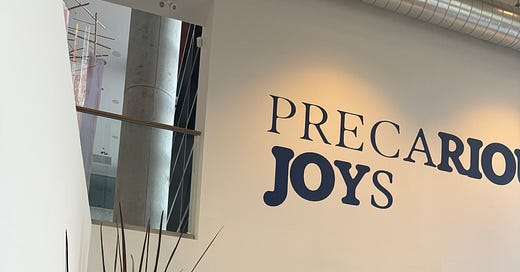A month ago, the Opinion Editor at the Toronto Star, Richard Warnica, asked me if I’d like to write about the Toronto Biennial. I love writing for newspapers, so the answer was an easy yes. But I also had reservations—I didn’t exactly love the Biennial, and would have to say so.
I’ve written about my complicated feelings around criticism before (here). I wrote:
Since my days as a young book critic, I’ve formed some loose guidelines for myself when it comes to negative or critical reviews:
No punching down.
Does the angle speak to a larger issue or trend?
Would I find writing about the work interesting?
Is there something else I would rather be writing?
I’m happy to report that my review follows all of my guidelines. It’s still nerve-wracking to be critical. Toronto (and Canada) has a tight-knit art world with scant critical discourse. My understanding is that, with limited opportunities and cross-pollination, people avoid criticism lest it comes across as non-supportive. I don’t think anyone can excuse me for not supporting the arts in Canada, though.
Since the piece went live online (it will be in print this weekend), I've received at least ten messages from people saying they feel the exact same way as I do and thanking me for writing what everyone was thinking. It’s been a relief to hear that people are open to more discourse, and it made me feel a bit more brave about publishing a range of criticism.
If you’ve been to the Toronto Biennial, I would love to hear your thoughts—whether you agree or disagree. As anyone who has emailed me criticism of my work knows, I’m always open to discourse and respectful disagreements.
The following is a short excerpt from my article in the Toronto Star. You can read it here online or in print this weekend.
I think about art every day — it’s both my job and my passion. I write a weekly newsletter, Art Forecast, that tracks art news and trends. I also help galleries and artists with communication strategies and marketing. And yet, I have no idea who the Toronto Biennial of Art — ostensibly one of the biggest and most important events in Toronto’s art calendar — is for.
Launched in 2019, the Toronto Biennial, now in its third iteration and on until Dec. 1, feels more DIY than world class. The presentation this year reads more like a graduate exhibition than anything you’d see in Venice or the Whitney Museum, in New York, home to the two of the more famous art biennials in the world.
None of this is a commentary on the art itself. It’s the presentation that feels confusing to me. The biennial spans 11 exhibition sites, with 36 artists and over 90 artworks. That’s just over 1.5 works per artist; not nearly enough to showcase any single artistic vision. Some sites have one artwork or installation, while other locations, such as 32 Lisgar St. and The Auto BLDG, have many more. In my opinion, that’s too many sites and too few works per artist.
If we’re going to have a biennial, we should have one that has its own unique vision and cohesive purpose…






Biennials are markets. Like any market, it reflects the interest of it's audience. Toronto's interest in art can be deduced from the Biennial's exposition.